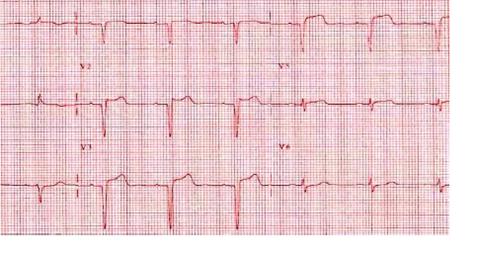
I was at home on Kibbutz Tzorah when the chest pain started. I am grateful that my wife insisted that we go to the Kupat Cholim center. They gave me an ECG and immediately called the ambulance to take me to Hadassah Hospital, because with the Hadassah trained EMS and specially equipped ambulances, the treatment for my heart attack started the moment that the ambulance arrived.
During the 30 minute ride to the Hadassah Hospital, I was given a clot-busting medication. The medics in the ambulance sent (by mobile phone) a copy of the ECG they took while we were travelling to Hadassah. On seeing the results the doctors there decided that I would go directly to the Catheterization Lab. They were waiting to receive me the moment I arrived at the Catheterization clinic and the cardiologist was ready to operate on me immediately. I never even went through the Emergency room!! I was the beneficiary of a process started at Hadassah that has saved thousands of lives over the years.
It was only later that I learned the details about the research and treatment protocol that had resulted in Hadassah saving my life. In the l980s, Hadassah researchers were part of the group that showed that in heart attacks a blood clot (thrombus) obstructs the coronary artery. Hadassah was the first hospital in the world to initiate the practice of dissolving a thrombus with streptokinase.
When mortality rates dropped dramatically with the use of clot-busting medications, Hadassah introduced the concept of beginning the procedure as early as possible — while the patient was still in the ambulance. They provided special training and equipment for the EMTs on the ambulances.
Realizing that to save a heart patient’s life it is also crucial to get the patient to the Catheterization Lab as soon as possible, Hadassah refined the protocol by having the patient brought straight from the ambulance to the Catheterization Lab. In this way, it can be less than an hour from the first moment a patient experiences heart pain to the time an interventional cardiologist opens his artery. As a result, mortality rates drop even more significantly and damage to the heart muscle is minimized.
The heart failure mortality in Jerusalem is notably lower than that in other parts of Israel, thanks to Hadassah’s procedures. It used to be that mortality rates from heart attacks were 15 to 20 percent. With the medication and catheterization, it has dropped to 2.5% at Hadassah!
I am still attending the Cardiac Rehabilitation Unit called O2 which is in the Rickliss building at Hadassah Har Hatzofim (Mount Scopus) on a regular basis. I cannot begin to tell you how wonderful the treatment I have received has been. The staff has been incredibly dedicated and supportive. Even during the period in February when there was a strike at Hadassah, the center was open and fully staffed!
Todah rabah Hadassah. Thanks to you, I have been given the gift of many more years to enjoy my grandchildren.
Errol Sapir
Kibbutz Tzorah
